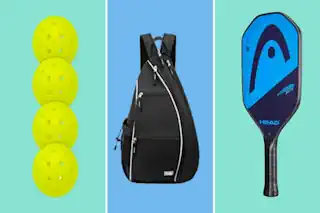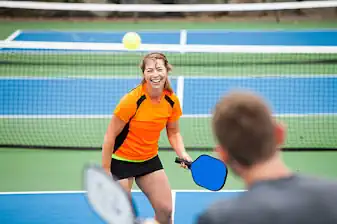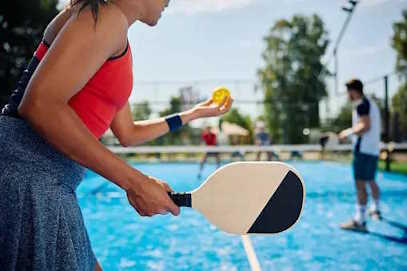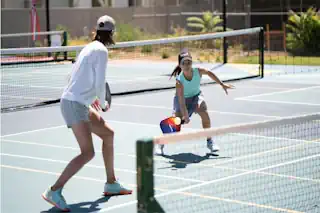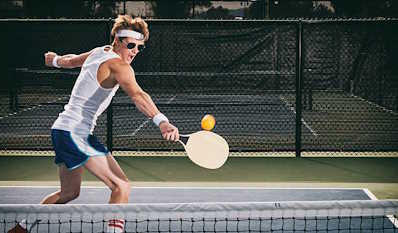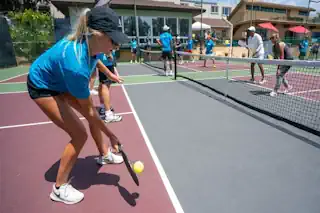The Fascinating History of Pickleball: From Backyard Fun to Global Phenomenon
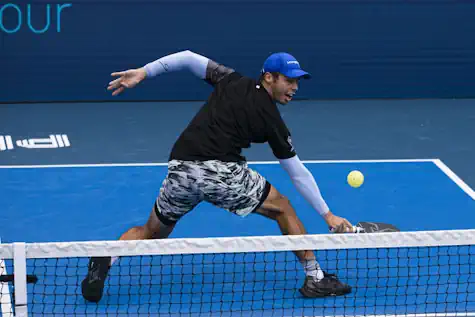
Introduction to Pickleball: A Brief Overview
Welcome to the world of pickleball! Whether you’re a seasoned player, a sports enthusiast, or someone just curious about the game, this post is for you. Let’s dive into the journey of this fascinating sport and discover how it evolved from a simple backyard pastime to an internationally recognized game.
What is Pickleball?
Pickleball is a unique paddle sport that combines elements of tennis, badminton, and table tennis. Played on a smaller court with a modified tennis net, it uses paddles and a lightweight plastic ball with holes. The game can be enjoyed in singles or doubles formats and is known for its accessibility and quick learning curve.
The Birth of Pickleball: History and Development
The Story Behind Pickleball’s Creation
The year was 1965. On Bainbridge Island, Washington, a few dads – Joel Pritchard, Bill Bell, and Barney McCallum – were looking to entertain their families. They improvised a new game using a badminton court, some table tennis paddles (i.e. ping pong paddles), and a perforated plastic ball called a wiffle ball. What started as a simple solution to summer boredom quickly became a beloved family activity.
Key Figures and Milestones
Joel Pritchard: A U.S. Congressman who, along with his friends, co-founded the game.
Bill Bell: A successful businessman and co-creator of pickleball.
Barney McCallum: Instrumental in formalizing the rules and spreading the game beyond their island.
The quirky name “pickleball” reportedly came from the Pritchards’ dog, Pickles, who loved chasing the ball. By the late 1960s, the first permanent pickleball court was constructed, and the sport called pickleball began gaining regional popularity. These gentlemen are credited as the ones who invented pickleball.
Pickleball’s Rise to Popularity: A Contemporary Sport
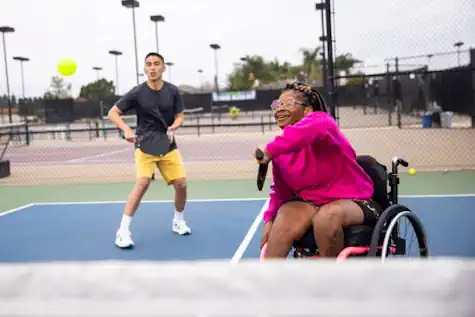
Growth in the United States and Internationally
From those humble beginnings, pickleball has seen tremendous growth. The establishment of the USA Pickleball Association (USAPA) in 1984 helped standardize the rules and promote the sport nationwide. Today, there are thousands of courts across the U.S., and the game is played in many countries around the world, including Canada, Spain, and India.
It is one of the fastest-growing sports in the world. There is even a television station dedicated to mass media exposure of pickleball tournament play, games, national championships, and many other pickleball tournaments. In addition, there are numerous online pickleball magazine choices available.
Factors Contributing to Its Popularity
Several factors have fueled pickleball’s rise:
Accessibility: Suitable for all ages and skill levels, pickleball is easy to learn and play.
Community: Local clubs and social events foster a sense of belonging among players.
Health Benefits: The game’s moderate pace provides a great workout without being overly strenuous.
Current Professional Pickleball Associations: Key Organizations
The growing popularity of pickleball has led to the formation of various professional associations dedicated to promoting and governing the sport at different levels. Here are some of the key professional pickleball associations:
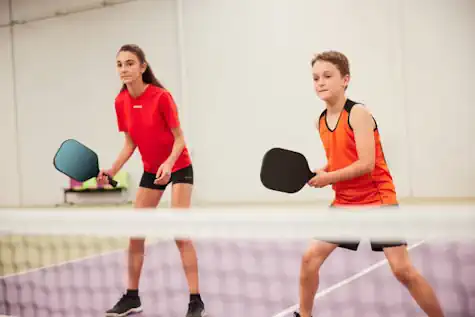
USA Pickleball Association (USAPA): The leading organization for promoting pickleball in the United States, responsible for standardizing the rules and organizing national tournaments.
International Federation of Pickleball (IFP): The global governing body that oversees the development and growth of pickleball worldwide.
Professional Pickleball Association (PPA): Focuses on organizing professional tournaments and tours, attracting top-level players from across the globe.
Association of Pickleball Professionals (APP): Another major organization that hosts competitive events and works towards expanding the professional circuit.
Pickleball Canada Organization (PCO): The main body for pickleball in Canada, fostering the sport’s growth and managing national events.
European Pickleball Federation (EPF): Coordinates efforts to promote and regulate pickleball within Europe, enhancing the sport’s visibility and participation.
Indian Pickleball Association (IPA): Dedicated to nurturing and promoting pickleball in India, conducting events and training sessions to boost local interest.
The Basics of Playing Pickleball
Court and Equipment Overview
Pickleball is played on a 20×44-foot court, divided by a net similar to a tennis net but slightly lower. Players use paddles made of wood or composite materials and a ball known for its distinct holes, ensuring a slower flight.
Basic Rules and Gameplay
Games are typically played to 11 points.
Points can only be scored by the serving side.
The ball must bounce once on each side before volleys are allowed, a rule known as the “double bounce” rule.
There is a non-volley zone near the net called the kitchen in which players can enter only if the ball bounces in the kitchen.
Pickleball for All: The Game’s Inclusivity

Popularity Among All Age Groups
One of pickleball’s most endearing qualities is its inclusiveness. Whether you’re a young athlete or a retiree, the game offers something for everyone. Its adaptable nature makes it particularly popular among seniors, providing a fun way to stay active. Pickleball kits can be found at most sporting goods stores, department stores, and online. Pickleball kits are very affordable.
Health and Social Benefits
Playing pickleball promotes cardiovascular health, improves reflexes, and enhances hand-eye coordination. Beyond physical benefits, it fosters social connections, making it a great way to meet new people and build lasting friendships. It is an exciting game that fosters competitive play from beginners through winning a pickleball championship.
The Future of Pickleball: Trends and Predictions
Current Trends in Pickleball
The sport continues to evolve with trends such as:
Youth Programs: Increasing involvement of younger players.
Professional Leagues: The emergence of professional pickleball tournaments and leagues.
Tech Integration: Use of technology for training and gameplay analysis.
Pickleball Courts: More and more communities are converting spaces to make official pickleball playing areas. Local pickleball courts are available both indoor and out.
Pickleball Clubs: Most cities have an official organization where you can learn the game and test your skills.
Major League Pickleball: A new variation of pickleball tournament play with higher point totals and every winning exchange scores a point.
The Game’s Future Impact
As the sport grows, it’s poised to become a staple in physical education programs and community centers worldwide. Its blend of competitiveness and inclusivity ensures that pickleball will remain a beloved activity for generations to come.
Conclusion: The Enduring Appeal of Pickleball
Reflecting on pickleball’s journey, it’s clear why this game has captured the hearts of so many. From its fun origins to its current status as a global sport, pickleball offers joy, health benefits, and a sense of community.
Whether you’re a seasoned pro or a curious beginner, now is the perfect time to pick up a paddle and join the pickleball movement. Why not head to your nearest court and experience the magic of pickleball for yourself?
Thank you for taking the time to explore the history and joys of pickleball with us. Happy playing!
Frequently Asked Questions (FAQ) about Pickleball
What is the origin of pickleball?
Pickleball was invented in 1965 on Bainbridge Island, Washington, by three dads — Joel Pritchard, Bill Bell, and Barney McCallum — who wanted to create a fun game for their families.
Who can play pickleball?
Pickleball is suitable for all ages and skill levels. It’s a highly accessible sport that appeals to young children, adults, and seniors alike.
What equipment do I need to play pickleball?
To play pickleball, you’ll need a paddle, a pickleball (a perforated plastic ball), and a court with a net. Paddles can be made of wood or composite materials.
How is pickleball different from tennis?
While pickleball shares some similarities with tennis, the courts are smaller, we use a composite pickleball paddle (not strung), the balls have holes, and the net is slightly lower. Additionally, the game has a unique “double bounce” rule and a designated non-volley zone called the kitchen.
What are the benefits of playing pickleball?
Pickleball provides numerous health benefits, including cardiovascular fitness, improved coordination, and enhanced reflexes. It also encourages social interaction and community building, making it a fun and inclusive activity.
How can I find a pickleball court near me?
Many local parks, recreation centers, and clubs have pickleball courts. You can check online directories, the USAPA website, or your community’s sports facilities to locate courts in your area.
Are there professional pickleball players and tournaments?
Yes, there are professional players and numerous tournaments organized by associations such as the USA Pickleball Association (USAPA), the Professional Pickleball Association (PPA), and the Association of Pickleball Professionals (APP). A little hunting online and it is easy to find a pickleball tournament nearby.
Is pickleball easy to learn?
Yes, one of pickleball’s attractions is its simplicity. Basic rules and techniques can be picked up quickly, making it easy for newcomers to start playing and enjoying the game right away. The official rulebook is maintained by the USA Pickleball Association (USAPA) and updated by the USAPA Rules committee as competitive play pushes the game forward.
Can pickleball be played indoors and outdoors?
Absolutely. Pickleball can be played on both indoor and outdoor courts, providing flexibility depending on the weather and available facilities. You might be surprised to find an official pickleball court is just around the corner.
What are some current trends in pickleball?
Current trends include increasing youth participation, the growth of professional leagues, the integration of technology in training, and the development of more dedicated pickleball courts and clubs. Additionally, there is now a National Senior Games Association and open pickleball championships at all levels.
